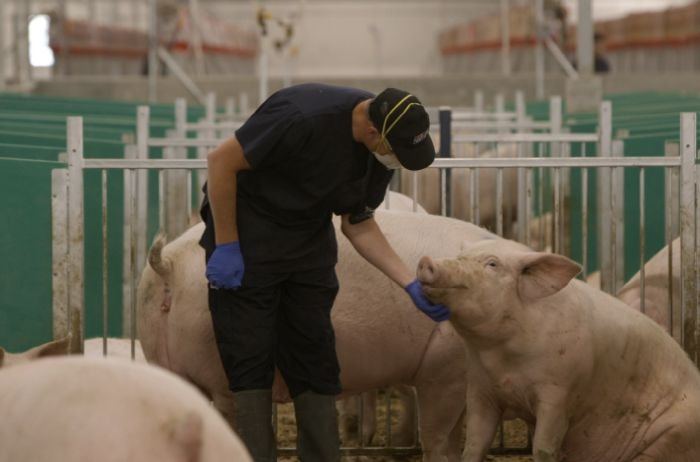Money moves in mysterious ways, especially when a company worth $2.3 billion decides to split itself in two. That’s exactly what’s happening at Maple Leaf Foods, where shareholders just overwhelmingly approved the spinoff of its meat processing division, Canada Packers.
At Tuesday’s special meeting, 99.89% of votes cast favored the separation plan, effectively giving the green light to create two distinct publicly traded companies from what was once Canada’s largest food processor. While regulatory approvals still stand between now and the actual split, the shareholder endorsement marks a critical milestone.
“Today’s vote represents a pivotal moment in Maple Leaf’s evolution,” said Michael McCain, Executive Chair of Maple Leaf Foods. “The overwhelming support from our shareholders validates our belief that operating as two focused companies will unlock significant value and provide each business with the strategic independence to thrive in their respective markets.”
The company first announced this separation strategy back in May, positioning it as a way to let each business pursue its own growth trajectory. Under the proposal, Maple Leaf Foods will retain its plant-based protein operations and prepared meats business, while the new Canada Packers entity will take over fresh pork and poultry processing operations.
What’s driving this corporate divorce? According to industry analysts, it’s about specialization in an increasingly competitive global food market.
“Food companies are under immense pressure to either innovate with premium products or compete on production efficiency,” explains Sylvain Charlebois, Director of the Agri-Food Analytics Lab at Dalhousie University. “By separating these businesses, each can deploy capital more effectively toward their distinct competitive advantages rather than fighting for resources internally.”
The financial rationale makes sense on paper. Maple Leaf’s plant-based and prepared foods segments typically command higher margins but require continuous innovation, while the meat processing operations benefit from scale and operational efficiency but face tighter margins and commodity price volatility.
This corporate restructuring comes amid significant turbulence in the meat processing sector. Labor challenges, supply chain disruptions, and fluctuating input costs have squeezed margins across the industry. Meanwhile, Canada’s food manufacturing sector has seen consolidation as players seek economies of scale to compete globally.
For employees across Maple Leaf’s operations, the spinoff creates both opportunity and uncertainty. The company operates multiple facilities across Canada, including major processing plants in Manitoba and Ontario. Management has indicated that the separation isn’t primarily focused on cost-cutting, but rather on creating focused growth strategies for each business.
“We expect minimal disruption to day-to-day operations,” said Curtis Frank, President and CEO of Maple Leaf Foods, during an investor call following the announcement. “Both companies will continue to serve their customers without interruption while benefiting from more tailored capital allocation and management focus.”
The strategy isn’t without precedent. In the U.S., Tyson Foods has maintained distinct business units for fresh meat and prepared foods, though under one corporate umbrella. Smithfield Foods, meanwhile, has organized itself around fresh pork and packaged meats divisions to address similar market dynamics.
What makes Maple Leaf’s move notable is the complete corporate separation they’re pursuing. Once complete, investors will hold shares in two entirely independent companies, each with its own board, management team, and strategic priorities.
For Canadian consumers, the immediate impact will likely be minimal, but the long-term implications could be significant for food prices and product innovation. The meat processing industry in Canada is already highly concentrated, with just a handful of companies controlling much of the market.
“Having another independent, publicly traded meat processor could potentially increase competition, which might benefit both farmers and consumers,” notes Kelsey Johnson, agriculture and food policy analyst. “But it could also lead to further industry consolidation if either company becomes an acquisition target.”
Investors have responded cautiously but positively to the spinoff plan. Since the announcement, Maple Leaf’s stock has gained approximately 5%, suggesting the market sees potential in the separation strategy but is waiting to evaluate execution details.
The next steps involve securing final regulatory approvals and completing the operational separation, which the company expects to finalize by early 2025. Both companies will remain headquartered in Canada, with the newly created Canada Packers taking its name from the historic Canadian meat packing company that merged with Maple Leaf Mills in 1991.
As the food industry continues to evolve, with changing consumer preferences and increasing focus on sustainability, this corporate restructuring represents more than just a financial transaction—it’s a bet on specialization as the path to future growth in a complex and challenging market.
The question now becomes whether two focused companies can indeed create more value than one integrated operation. For shareholders, employees, and consumers alike, the proof will be in the proverbial pudding—or in this case, in both the plant-based burgers and pork chops that will soon come from two separate corporate kitchens.






